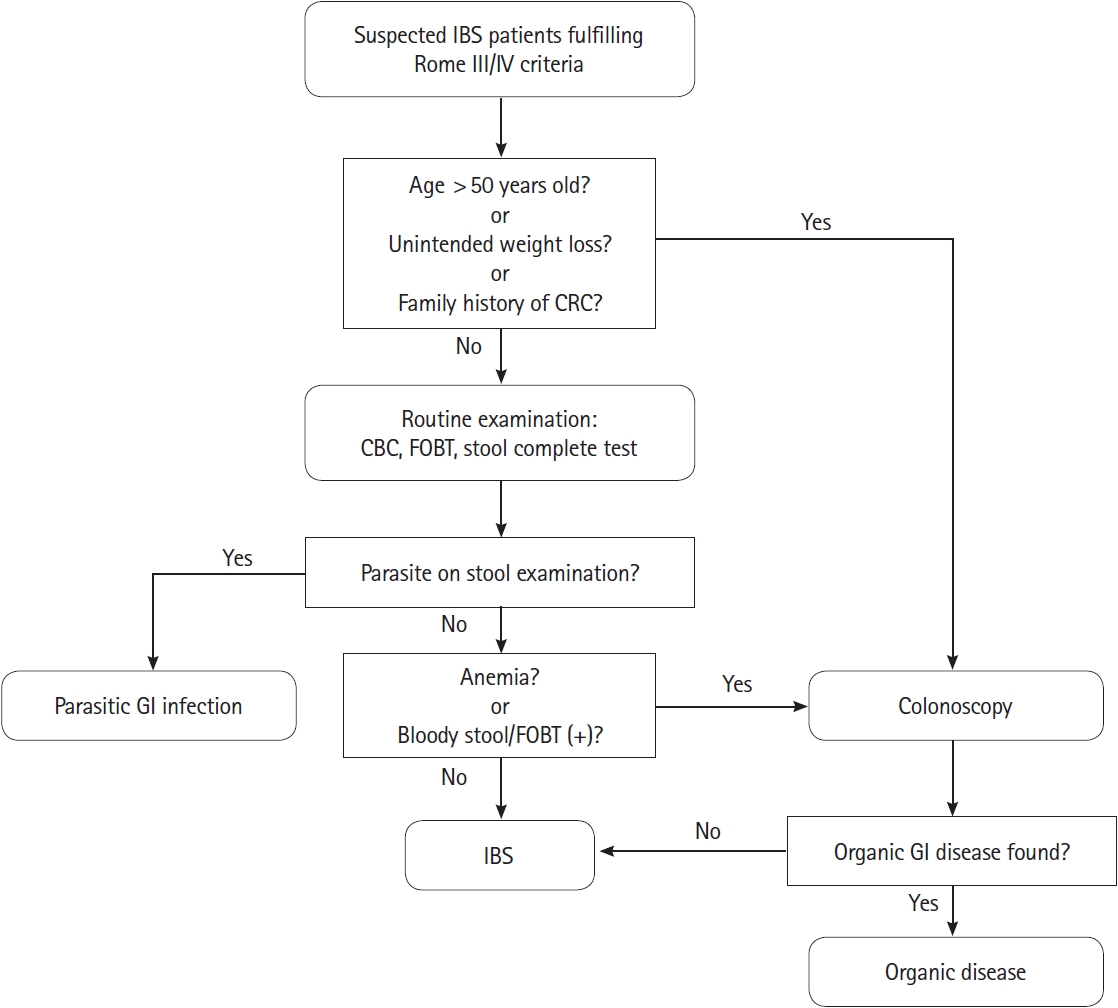1. Oka P, Parr H, Barberio B, Black CJ, Savarino EV, Ford AC. Global prevalence of irritable bowel syndrome according to Rome III or IV criteria: a systematic review and meta-analysis. Lancet Gastroenterol Hepatol 2020;5:908-917.


2. Sperber AD, Dumitrascu D, Fukudo S, et al. The global prevalence of IBS in adults remains elusive due to the heterogeneity of studies: a Rome Foundation working team literature review. Gut 2017;66:1075-1082.


3. Ladep NG, Okeke EN, Samaila AA, et al. Irritable bowel syndrome among patients attending General Outpatients’ clinics in Jos, Nigeria. Eur J Gastroenterol Hepatol 2007;19:795-799.


5. Gwee KA. Irritable bowel syndrome in developing countries: a disorder of civilization or colonization? Neurogastroenterol Motil 2005;17:317-324.


6. Peery AF, Crockett SD, Murphy CC, et al. Burden and cost of gastrointestinal, liver, and pancreatic diseases in the United States: update 2018. Gastroenterology 2019;156:254-272.


7. Canavan C, West J, Card T. Review article: the economic impact of the irritable bowel syndrome. Aliment Pharmacol Ther 2014;40:1023-1034.

8. Ladabaum U, Boyd E, Zhao WK, et al. Diagnosis, comorbidities, and management of irritable bowel syndrome in patients in a large health maintenance organization. Clin Gastroenterol Hepatol 2012;10:37-45.

9. Lacy BE, Patel H, Guérin A, et al. Variation in care for patients with irritable bowel syndrome in the United States. PLoS One 2016;11:e0154258.

10. Roshandel D, Rezailashkajani M, Shafaee S, Zali MR. A cost analysis of functional bowel disorders in Iran. Int J Colorectal Dis 2007;22:791-799.


11. Dean BB, Aguilar D, Barghout V, et al. Impairment in work productivity and health-related quality of life in patients with IBS. Am J Manag Care 2005;11(1 Suppl):S17-S26.
12. Kanazawa M, Endo Y, Whitehead WE, Kano M, Hongo M, Fukudo S. Patients and nonconsulters with irritable bowel syndrome reporting a parental history of bowel problems have more impaired psychological distress. Dig Dis Sci 2004;49:1046-1053.

13. Kanazawa M, Drossman DA, Shinozaki M, et al. Translation and validation of a Japanese version of the irritable bowel syndrome-quality of life measure (IBS-QOL-J). Biopsychosoc Med 2007;1:6.


14. Drossman DA, Chang L, Schneck S, Blackman C, Norton WF, Norton NJ. A focus group assessment of patient perspectives on irritable bowel syndrome and illness severity. Dig Dis Sci 2009;54:1532-1541.


15. Drossman DA, Morris CB, Schneck S, et al. International survey of patients with IBS: symptom features and their severity, health status, treatments, and risk taking to achieve clinical benefit. J Clin Gastroenterol 2009;43:541-550.
16. Lacy BE, Everhart KK, Weiser KT, et al. IBS patients’ willingness to take risks with medications. Am J Gastroenterol 2012;107:804-809.


17. Frändemark Å, Törnblom H, Jakobsson S, Simrén M. Work productivity and activity impairment in irritable bowel syndrome (IBS): a multifaceted problem. Am J Gastroenterol 2018;113:1540-1549.


18. Leong SA, Barghout V, Birnbaum HG, et al. The economic consequences of irritable bowel syndrome: a US employer perspective. Arch Intern Med 2003;163:929-935.

21. Corsetti M, Tack J, Attara G, Sewell M. IBS Global Impact Report 2018: uncovering the true burden of irritable bowel syndrome (IBS) on people’s lives. Vancouver: Gastrointestinal Society, 2018.
22. Lacy BE, Pimentel M, Brenner DM, et al. ACG Clinical Guideline: management of irritable bowel syndrome. Am J Gastroenterol 2021;116:17-44.


23. Begtrup LM, Engsbro AL, Kjeldsen J, et al. A positive diagnostic strategy is noninferior to a strategy of exclusion for patients with irritable bowel syndrome. Clin Gastroenterol Hepatol 2013;11:956-962.


25. Wilson GT, Walsh BT. Eating disorders in the DSM-IV. J Abnorm Psychol 1991;100:362-365.


26. Lamprecht F, Sack M. Posttraumatic stress disorder revisited. Psychosom Med 2002;64:222-237.


28. Mearin F, Lacy BE, Chang L, et al. Bowel disorders. Gastroenterology 2016;150:1393-1407.

29. Shivaji UN, Ford AC. Beliefs about management of irritable bowel syndrome in primary care: cross-sectional survey in one locality. Prim Health Care Res Dev 2015;16:263-269.


30. Sood R, Gracie DJ, Law GR, Ford AC. Systematic review with meta-analysis: the accuracy of diagnosing irritable bowel syndrome with symptoms, biomarkers and/or psychological markers. Aliment Pharmacol Ther 2015;42:491-503.


31. Ford AC, Chey WD, Talley NJ, Malhotra A, Spiegel BM, Moayyedi P. Yield of diagnostic tests for celiac disease in individuals with symptoms suggestive of irritable bowel syndrome: systematic review and meta-analysis. Arch Intern Med 2009;169:651-658.


33. Fairbrass KM, Costantino SJ, Gracie DJ, Ford AC. Prevalence of irritable bowel syndrome-type symptoms in patients with inflammatory bowel disease in remission: a systematic review and meta-analysis. Lancet Gastroenterol Hepatol 2020;5:1053-1062.


35. Patel P, Bercik P, Morgan DG, et al. Prevalence of organic disease at colonoscopy in patients with symptoms compatible with irritable bowel syndrome: cross-sectional survey. Scand J Gastroenterol 2015;50:816-823.


37. Poon D, Law GR, Major G, Andreyev HJ. A systematic review and meta-analysis on the prevalence of non-malignant, organic gastrointestinal disorders misdiagnosed as irritable bowel syndrome. Sci Rep 2022;12:1949.


38. Hellström PM, Benno P. The Rome IV: irritable bowel syndrome: a functional disorder. Best Pract Res Clin Gastroenterol 2019;40-41:101634.


39. Longstreth GF, Thompson WG, Chey WD, Houghton LA, Mearin F, Spiller RC. Functional bowel disorders. Gastroenterology 2006;130:1480-1491.

40. Gwee KA, Bak YT, Ghoshal UC, et al. Asian consensus on irritable bowel syndrome. J Gastroenterol Hepatol 2010;25:1189-1205.

41. Whitehead WE, Palsson OS, Simrén M. Irritable bowel syndrome: what do the new Rome IV diagnostic guidelines mean for patient management? Expert Rev Gastroenterol Hepatol 2017;11:281-283.

42. Black CJ, Craig O, Gracie DJ, Ford AC. Comparison of the Rome IV criteria with the Rome III criteria for the diagnosis of irritable bowel syndrome in secondary care. Gut 2021;70:1110-1116.

43. Yadav YS, Eslick GD, Talley NJ. Review article: irritable bowel syndrome: natural history, bowel habit stability and overlap with other gastrointestinal disorders. Aliment Pharmacol Ther 2021;54 Suppl 1:S24-S32.


44. Barberio B, Houghton LA, Yiannakou Y, Savarino EV, Black CJ, Ford AC. Symptom stability in Rome IV vs Rome III irritable bowel syndrome. Am J Gastroenterol 2021;116:362-371.

45. Ghoshal UC, Abraham P, Bhatt C, et al. Epidemiological and clinical profile of irritable bowel syndrome in India: report of the Indian Society of Gastroenterology Task Force. Indian J Gastroenterol 2008;27:22-28.
46. Ghoshal UC, Abraham P, Bhatia SJ, et al. Comparison of Manning, Rome I, II, and III, and Asian diagnostic criteria: report of the multicentric Indian irritable bowel syndrome (MIIBS) study. Indian J Gastroenterol 2013;32:369-375.


47. Pop LL, Mureşan IA, Dumitraşcu DL. How much bloating in the irritable bowel syndrome? Rom J Intern Med 2018;56:221-226.

48. Rahman MM, Mahadeva S, Ghoshal UC. Epidemiological and clinical perspectives on irritable bowel syndrome in India, Bangladesh and Malaysia: a review. World J Gastroenterol 2017;23:6788-6801.

49. Gwee KA, Gonlachanvit S, Ghoshal UC, et al. Second Asian Consensus on irritable bowel syndrome. J Neurogastroenterol Motil 2019;25:343-362.

50. Quigley EM. Impact of bloating and distention in irritable bowel syndrome: have we wandered too far from the Manning creed? Clin Gastroenterol Hepatol 2009;7:7-8.

51. Sperber AD, Gwee KA, Hungin AP, et al. Conducting multinational, cross-cultural research in the functional gastrointestinal disorders: issues and recommendations: a Rome Foundation working team report. Aliment Pharmacol Ther 2014;40:1094-1102.

52. Aziz I, Törnblom H, Palsson OS, Whitehead WE, Simrén M. How the change in IBS criteria from Rome III to Rome IV impacts on clinical characteristics and key pathophysiological factors. Am J Gastroenterol 2018;113:1017-1025.


53. Palsson OS, Whitehead WE, van Tilburg MA, et al. Rome IV diagnostic questionnaires and tables for investigators and clinicians. Gastroenterology 2016;150:1481-1491.

54. Ghoshal UC, Rahman MM, Pratap N, et al. Comparisons of the Rome III and Rome IV criteria for diagnosis of irritable bowel syndrome in Indian and Bangladeshi communities and internal shifts in the diagnostic categories of bowel disorders of gut-brain interactions. Neurogastroenterol Motil 2023;35:e14579.
55. Fukudo S, Okumura T, Inamori M, et al. Evidence-based clinical practice guidelines for irritable bowel syndrome 2020. J Gastroenterol 2021;56:193-217.


56. Quigley EM, Fried M, Gwee KA, et al. World Gastroenterology Organisation Global Guidelines irritable bowel syndrome: a global perspective update September 2015. J Clin Gastroenterol 2016;50:704-713.
57. Black TP, Manolakis CS, Di Palma JA. “Red flag” evaluation yield in irritable bowel syndrome. J Gastrointestin Liver Dis 2012;21:153-156.

58. Jellema P, van der Windt DA, Schellevis FG, van der Horst HE. Systematic review: accuracy of symptom-based criteria for diagnosis of irritable bowel syndrome in primary care. Aliment Pharmacol Ther 2009;30:695-706.

59. Asghar Z, Thoufeeq M, Kurien M, et al. Diagnostic yield of colonoscopy in patients with symptoms compatible with Rome IV functional bowel disorders. Clin Gastroenterol Hepatol 2022;20:334-341.

60. Whitehead WE, Palsson OS, Feld AD, et al. Utility of red flag symptom exclusions in the diagnosis of irritable bowel syndrome. Aliment Pharmacol Ther 2006;24:137-146.

61. Yang Q, Wei ZC, Liu N, et al. Predictive value of alarm symptoms in Rome IV irritable bowel syndrome: a multicenter cross-sectional study. World J Clin Cases 2022;10:563-575.

62. Tinmouth J, Lansdorp-Vogelaar I, Allison JE. Faecal immunochemical tests versus guaiac faecal occult blood tests: what clinicians and colorectal cancer screening programme organisers need to know. Gut 2015;64:1327-1337.

63. Klem F, Wadhwa A, Prokop LJ, et al. Prevalence, risk factors, and outcomes of irritable bowel syndrome after infectious enteritis: a systematic review and meta-analysis. Gastroenterology 2017;152:1042-1054.

64. Hamm LR, Sorrells SC, Harding JP, et al. Additional investigations fail to alter the diagnosis of irritable bowel syndrome in subjects fulfilling the Rome criteria. Am J Gastroenterol 1999;94:1279-1282.

65. Ximénez C, Morán P, Rojas L, Valadez A, Gómez A. Reassessment of the epidemiology of amebiasis: state of the art. Infect Genet Evol 2009;9:1023-1032.

66. Patel P, Bercik P, Morgan DG, et al. Irritable bowel syndrome is significantly associated with somatisation in 840 patients, which may drive bloating. Aliment Pharmacol Ther 2015;41:449-458.

67. Shafiei Z, Esfandiari F, Sarkari B, Rezaei Z, Fatahi MR, Hosseini Asl SM. Parasitic infections in irritable bowel syndrome patients: evidence to propose a possible link, based on a casecontrol study in the south of Iran. BMC Res Notes 2020;13:264.


68. Burke KE, D’Amato M, Ng SC, Pardi DS, Ludvigsson JF, Khalili H. Microscopic colitis. Nat Rev Dis Primers 2021;7:39.


69. Phisalprapa P, Supakankunti S, Chaiyakunapruk N. Cost-effectiveness and budget impact analyses of colorectal cancer screenings in a low- and middle-income country: example from Thailand. J Med Econ 2019;22:1351-1361.

70. Shaukat A, Kahi CJ, Burke CA, Rabeneck L, Sauer BG, Rex DK. ACG Clinical Guidelines: colorectal cancer screening 2021. Am J Gastroenterol 2021;116:458-479.

71. Mujagic Z, Jonkers DM, Hungin AP, et al. Use of Rome criteria for the diagnosis of irritable bowel syndrome in primary care: a survey among European countries. Eur J Gastroenterol Hepatol 2017;29:651-656.

72. Remes Troche JM, Bernal Reyes R, Valladares Lepine MA, Alonso Lárraga O, Gómez Escudero O, Meléndez Mena D. Gastroenterology diagnosis and treatment guidelines of irritable bowel syndrome; clinical features and diagnostic criteria. Rev Gastroenterol Mex 2009;74:58-62.
73. Ortiz-Garrido O, Schmulson MJ. Los medicos en latinoamerica reportan utilizar con mayor frecuencia los mas recientes criterios de Roma III para diagnosticar sindrome de intestino irritable en la clinica. Pero conocen realmente los criterios. Rev Gastroenterol Mex 2012;77(Suppl 3):95.
74. Thompson WG, Drossman DA, Talley N. Rome III diagnostic questionnaire for the adult functional GI disorders (including alarm questions) and scoring algorithm. In: Drossman DA, Corazziari E, Delvaux M, et al. eds. Rome III: the functional gastrointestinal disorders. 3rd ed. McLean: Degnon Associates, 2006;917-951.
75. Rajbhandari R, Blakemore S, Gupta N, et al. Crohn’s disease among the poorest billion: burden of Crohn’s disease in lowand lower-middle-income countries. Dig Dis Sci 2023;68:1226-1236.


76. Oxley H. Health policy. In: Organisation for Economic Co-operation and Development (OECD), ed. Getting it right: OECD Perspectives on Policy Challenges in Mexico. Paris: OECD, 2007:99-106.













